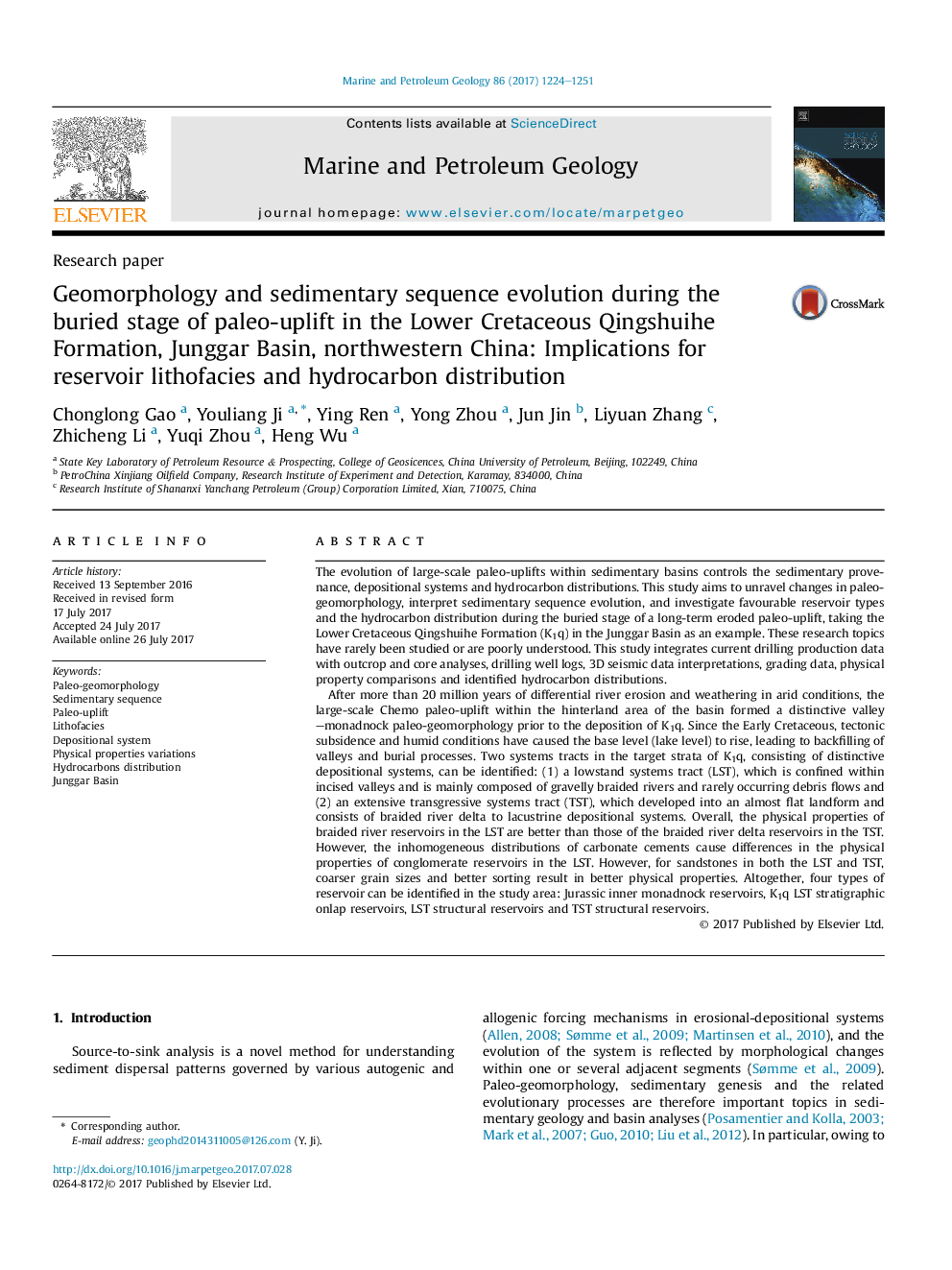| Article ID | Journal | Published Year | Pages | File Type |
|---|---|---|---|---|
| 5782031 | Marine and Petroleum Geology | 2017 | 28 Pages |
Abstract
After more than 20 million years of differential river erosion and weathering in arid conditions, the large-scale Chemo paleo-uplift within the hinterland area of the basin formed a distinctive valley-monadnock paleo-geomorphology prior to the deposition of K1q. Since the Early Cretaceous, tectonic subsidence and humid conditions have caused the base level (lake level) to rise, leading to backfilling of valleys and burial processes. Two systems tracts in the target strata of K1q, consisting of distinctive depositional systems, can be identified: (1) a lowstand systems tract (LST), which is confined within incised valleys and is mainly composed of gravelly braided rivers and rarely occurring debris flows and (2) an extensive transgressive systems tract (TST), which developed into an almost flat landform and consists of braided river delta to lacustrine depositional systems. Overall, the physical properties of braided river reservoirs in the LST are better than those of the braided river delta reservoirs in the TST. However, the inhomogeneous distributions of carbonate cements cause differences in the physical properties of conglomerate reservoirs in the LST. However, for sandstones in both the LST and TST, coarser grain sizes and better sorting result in better physical properties. Altogether, four types of reservoir can be identified in the study area: Jurassic inner monadnock reservoirs, K1q LST stratigraphic onlap reservoirs, LST structural reservoirs and TST structural reservoirs.
Related Topics
Physical Sciences and Engineering
Earth and Planetary Sciences
Economic Geology
Authors
Chonglong Gao, Youliang Ji, Ying Ren, Yong Zhou, Jun Jin, Liyuan Zhang, Zhicheng Li, Yuqi Zhou, Heng Wu,
